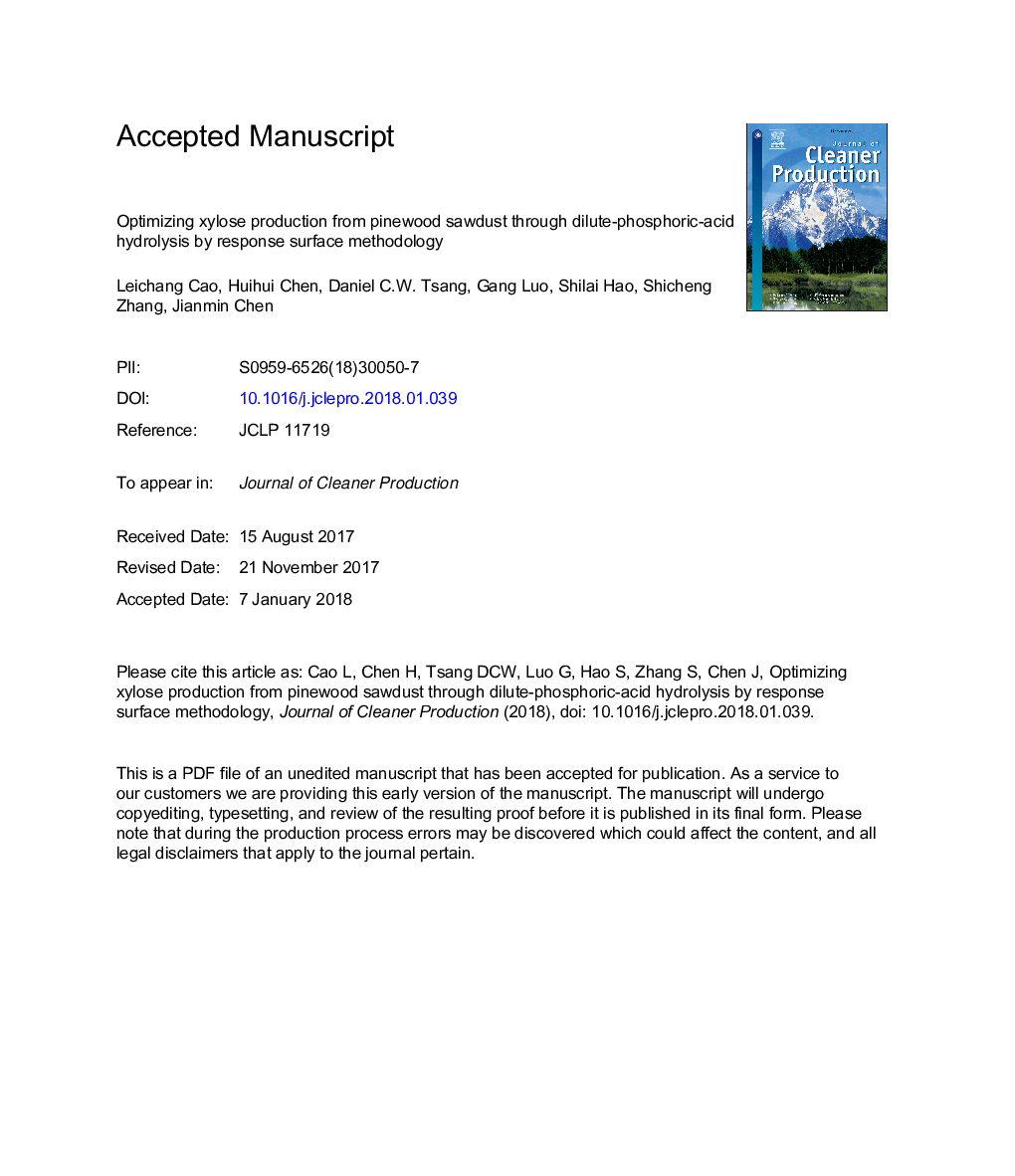| Article ID | Journal | Published Year | Pages | File Type |
|---|---|---|---|---|
| 8098469 | Journal of Cleaner Production | 2018 | 36 Pages |
Abstract
Response surface methodology was used to optimize the xylose production from pinewood sawdust through dilute-phosphoric-acid hydrolysis. The effects of independent variables on xylose yield were investigated, including reaction temperature (75-175â¯Â°C), reaction time (0-7.2â¯h), solution-to-feed ratio (4-20â¯mL/g), and phosphoric-acid concentration (0-6.67â¯wt%). Results indicated that the individual factor H3PO4 concentration and the interacting factors including temperatureâ¯Ãâ¯time, temperatureâ¯Ãâ¯H3PO4 concentration, and solution-to-feed ratioâ¯Ãâ¯H3PO4 concentration were all significant factors. Long reaction time (>5.4â¯h) and high phosphoric-acid concentration (>5%) showed little effect. Xylose yield increased with increasing temperature up to 125â¯Â°C. Higher phosphoric-acid concentration and larger solution-to-feed ratio also increased xylose yield. The coefficient of determination, corresponding analysis of variance, and parity plot indicated that the fitted model was appropriate for the acid-hydrolysis process. The maximum xylose production of 90.95% could be obtained with the reaction temperature of 106.7â¯Â°C, reaction time of 4.57â¯h, phosphoric-acid concentration 4.49â¯wt%, and solution-to-feed ratio of 12.51â¯mL/g.
Keywords
Related Topics
Physical Sciences and Engineering
Energy
Renewable Energy, Sustainability and the Environment
Authors
Leichang Cao, Huihui Chen, Daniel C.W. Tsang, Gang Luo, Shilai Hao, Shicheng Zhang, Jianmin Chen,
